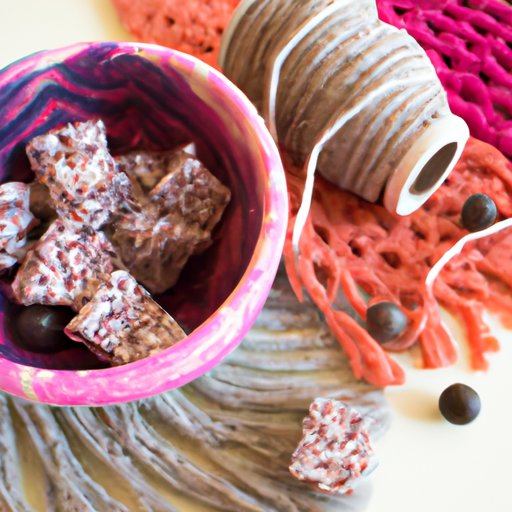
Introduction
Bubble gum is a popular treat enjoyed by both children and adults. And while it’s easily accessible in stores, there’s something special about making your own bubble gum. Unfortunately, not everyone knows how to make bubble gum from scratch. In this article, we’re going to provide step-by-step instructions on how to make homemade bubble gum. We’ll also be discussing the history of bubble gum, the science behind its texture, DIY kits, vegan alternatives, and creative flavors.
Step-by-Step Recipe
Before starting, it’s essential to ensure that you have all the necessary ingredients. Gum base, flavoring, corn syrup, powdered sugar, and citric acid are commonly used ingredients. Gum base is the most crucial ingredient as it provides the chewiness of the bubble gum while the other ingredients add flavor and sweetness.
First, you’ll need to melt the gum base through heating it in the microwave at low power. After melting it, add the corn syrup, powdered sugar, and citric acid while mixing each ingredient properly. Finally, add a few drops of flavoring of your choice, and then start kneading until all ingredients are thoroughly mixed together. You’ll end up with a ball of bubble gum that you can shape and cut into pieces.
A few tips to keep in mind while making bubble gum include using gloves to avoid staining your hands with food coloring, avoiding over-kneading the dough, and making sure that you add the ingredients in the recommended ratio.
History of Bubble Gum
Bubble gum has a rich history that spans over a century. In 1906, Frank Fleer invented the first bubble gum, called Blibber-Blubber. It was originally advertised as a gum that allowed blowing bubbles, but it was too sticky and didn’t taste well. In 1928, Walter Diemer invented the modern bubble gum formula that was chewy, softer, and didn’t stick to teeth. After he experimented with colors, he came up with the classic pink bubble gum color, and the bubble gum produced became a hit.
The Science Behind Bubble Gum
Have you ever wondered why bubble gum is so chewy? Well, the answer lies in the gum base, which contains various ingredients such as elastomers and resins that make it elastic. The sugars and flavorings included in the recipe soften the gum base and provide the desired flavor. As for the texture, the air pockets in gum base expand when exposed to pressure, allowing for that classic bubbly texture.
When it comes to making homemade bubble gum that doesn’t stick to your teeth, one trick is to use flour in place of corn syrup. Corn syrup can increase the stickiness of the gum, making it challenging to chew. Flour is an excellent alternative because it adds structure without the stickiness.
DIY Bubble Gum Kits
If you’re not interested in gathering all the ingredients and tools needed to make bubble gum, you can opt for a DIY bubble gum kit. These kits usually contain everything you need, including the ingredients, flavorings, and tools like bubble gum molds. Some popular options include the Mindware Science Academy Deluxe Bubble Gum Factory and the Glee Gum Make Your Own Bubble Gum Kit.
Vegan Bubble Gum
Did you know that some bubble gum contains animal-derived ingredients such as beeswax or glycerin? If you’re vegan or want to avoid animal products, you can make your own vegan bubble gum. Agar powder or xanthan gum can be used in place of gelatin as a thickening agent, and vegetable glycerin can replace beeswax.
Here’s a recipe for vegan bubble gum: mix 1/2 cup of gum base with 1/4 cup of vegetable glycerin and 1/4 cup of powdered sugar. Heat in the microwave, add a few drops of flavoring, and knead until thoroughly mixed. You can also experiment with different flavorings and colors to create your desired flavor.
Creative Bubble Gum Flavors
Do you want to take your bubble gum game to the next level? Here are some creative flavor combinations to try:
– Orange Creamsicle: mix orange and vanilla flavorings.
– Root Beer Float: mix root beer and vanilla flavorings.
– Watermelon Lemonade: mix watermelon and lemon flavorings.
– Green Apple Caramel: mix green apple and caramel flavorings.
– Blueberry Cotton Candy: mix blueberry and cotton candy flavorings.
Conclusion
Making homemade bubble gum is a fun and easy process that you can enjoy with friends and family. With the right ingredients and a little creativity, you can experiment with different flavors and textures, making your bubble gum unique. We hope this article has taught you how to make bubble gum, and we encourage you to try it out.





